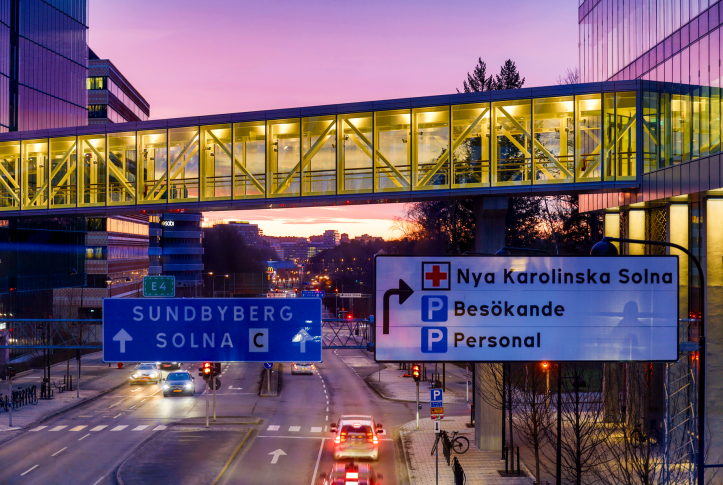In June, the Supreme Court in Dobbs v. Jackson Women’s Health Organization overturned Roe v. Wade, changing America’s health care landscape. This triggered new and existing legislation in states seeking to restrict abortion, which will deepen already-existing inequities among states in terms of access to abortion, maternal health, and reproductive health services. These new laws will have a disproportionate impact on low-income women and women of color as a result of factors including an increased likelihood of being uninsured and decreased likelihood of having jobs with adequate wages or employer-based coverage. In this post, we examine how reproductive health care in the United States compares with care in other high-income countries to draw lessons for how U.S. policymakers could work to improve women’s health.
Abortion Is More Accessible and Affordable in Other High-Income Countries
Access
In other high-income countries, health care includes access to reproductive care, contraception, and abortion. Research shows that restricted access to abortion is associated with negative social and health-related consequences for pregnant women and can result in adverse birth outcomes. These consequences may include denial of emergency care in life-threatening situations, increased rates of preterm births, and infant and maternal mortality.
Findings from the Commonwealth Fund’s latest international women’s brief show barriers to access in the U.S. that result in American women of reproductive age having the highest rate of maternal mortality, with Black women three times more likely to die from complications than white women. Additionally, women in the U.S. who do get pregnant rely more on OB-GYNs and hospital-based births, because they lack access to community-based models of care, such as birthing centers, doulas, and midwives, which have been shown to improve health outcomes for low-risk women. Certain parts of the U.S. experience maternity care “deserts” because of lack of access to maternal health providers limiting access to safe birth settings.
Many U.S. states banned abortion with no exceptions, including for rape or incest, leading to the closure of clinics that provide reproductive care in addition to abortion. Low-income women rely on these clinics, and absolute restrictions place many at risk for limited access to a wide range of reproductive and women’s health care. Many high-income countries set time limits on abortions, but most also grant exceptions later in pregnancy under specific circumstances, such as when a woman’s health or life is at risk.
Affordability and Coverage
U.S. women are more likely to face significant financial burdens when it comes to receiving health services compared to women in other high-income countries. The out-of-pocket cost of an abortion ranges widely in the U.S., from $0 to $3,700, based on factors like insurance status, geography, and type of abortion (medical vs. surgical). Even with private health insurance or state-financed public coverage, women may face costs, including those associated with long travel distances if abortion is banned in their state. Mississippi, for example, had only one abortion clinic, which closed its doors last July.
Research shows that women denied an abortion are more likely than women who received one to experience economic hardship and insecurity lasting years. In the 10 other high-income countries studied, abortion, contraception, and other forms of reproductive health care are free of charge and covered by publicly funded health insurance. In the U.S., cost is a barrier to seeking reproductive care: nearly 8 million women ages 19 to 64 do not have health insurance and 11 million women have inadequate coverage with high out-of-pocket costs.1
Reproductive Care Is Part of a Continuum of Comprehensive Primary Care and Robust Social Services
Women in the United States are less likely to have a regular doctor than are women in other high-income countries, apart from Sweden. As a result, women in the U.S. may miss out on comprehensive care that could identify or treat other problems that may have an impact on reproductive health. Other countries also invest more in social services, which support women if they do choose to have children. For example, France, Germany, New Zealand, Norway, Sweden, and the United Kingdom and all spend a larger share of GDP than the U.S. does on social services like early childhood education and parental leave. The U.S. is the only country to not guarantee paid leave for mothers and one of two to not guarantee paid leave for fathers. Women in the U.S. face higher costs and less public support raising children than do women in other high-income countries (e.g., limits on child allowances/tax credits to supplement income, affordable childcare, guaranteed health coverage).
The U.S. Has an Opportunity to Support a More Comprehensive Approach to Women’s Health That Includes Reproductive Care
Restrictions on abortion signal worsening access to reproductive care. Further, restrictive abortion policies can compound existing racial, ethnic, and socioeconomic health inequities. It will be important to monitor the equity impact of these policies moving forward. States with restrictive abortion laws often lack supportive policies, such as Medicaid expansion, expansive family and medical leave, comprehensive sex education, and a broad array of social supports, which can result in significant health inequities.
Policymakers at the state level have an opportunity to support legislation that includes abortion access and all reproductive care as part of comprehensive health care included in preventive services without cost sharing. Additionally, states can bolster coverage through policies that support Medicaid expansion and extend postpartum coverage to 12 months and increase workforce capacity by providing access to the full complement of community-based providers such as doulas and midwives.







